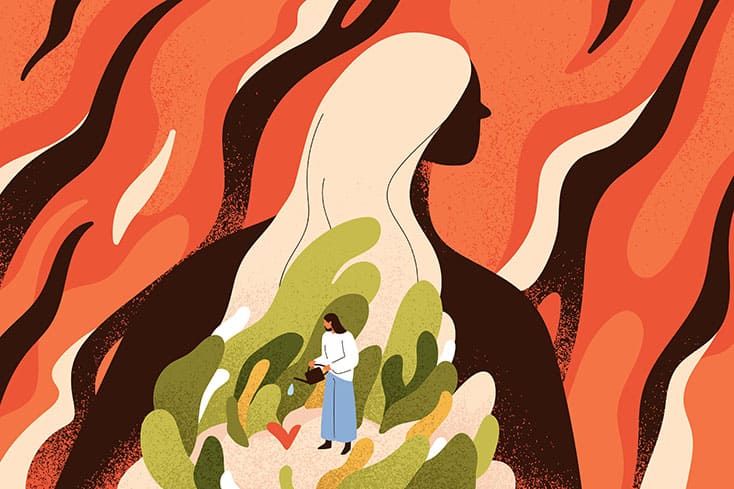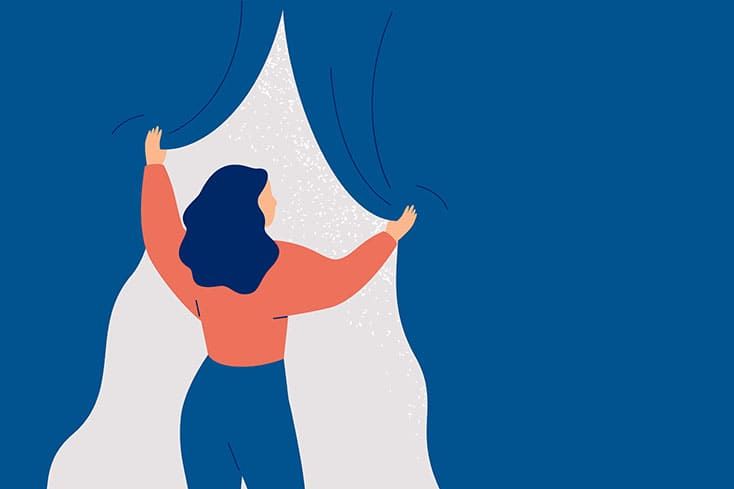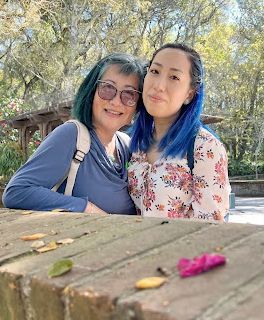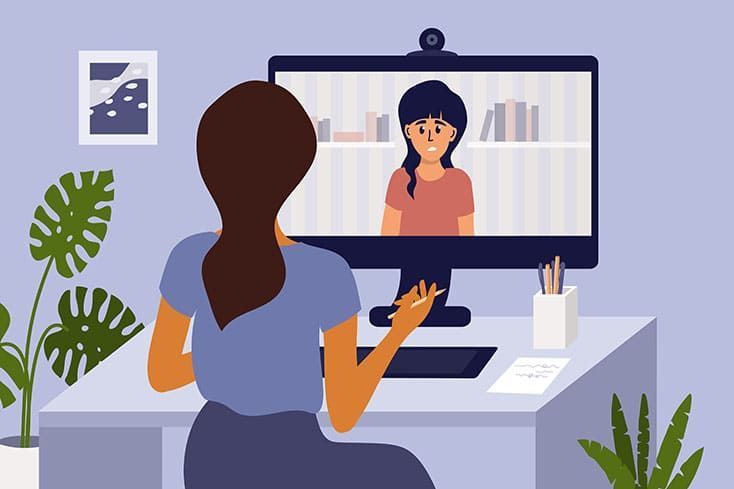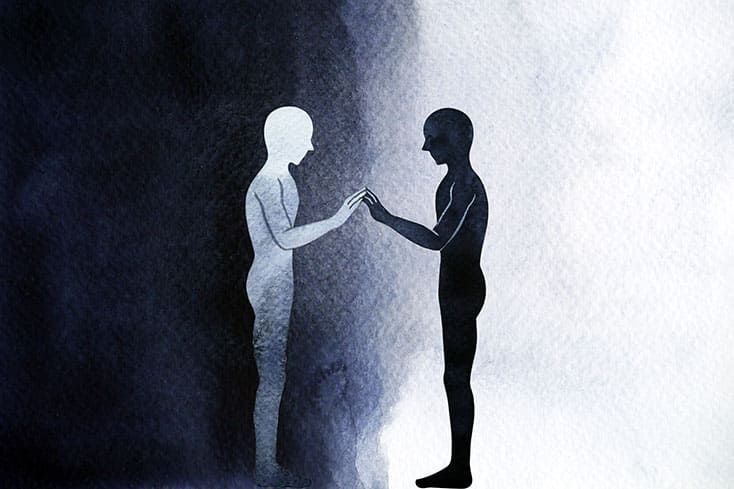接受我解離性身份障礙的旅程 | My Journey to Accepting My Dissociative Identity Disorder
MHACC 雙語部落格 Bilingue Blog
Scroll down for the English Version ⬇️
作者:Adrian Fletcher,心理學博士
2023年8月16日
2017年4月,我發現自己躺在一家住院治療設施裡,唯一的安慰是一條紫色的棉被。我似乎無法獲得足夠的藥物或小熊餅乾來麻痺我當時所面對的現實。然而,當時我並不知道的是,這次經歷將成為我康復的催化劑,並挽救了我的生命。
否認我的診斷
2012年,在我接受眼動脫敏和再處理療法(EMDR)治療創傷後壓力症候群(PTSD)的症狀時,我的治療師隨口提到了我可能患有解離性身份障礙(DID)的可能性。這種病症是由至少兩個不同且獨立的身份狀態存在於一個人內,每個身份都有其自己的記憶和行為。
這些身份,通常在系統中被稱為”變體”,通常是在經歷極端創傷後形成的應對機制,並掌控一個人的思想和行為。解離性身份障礙——以前稱為多重人格障礙,長期遭受媒體和醫學界的誤解和懷疑。
當時,我完全無法面對這個診斷。我終止了與那位治療師的合作,並重新尋找另一位治療師來繼續我的PTSD康復。在與新治療師的治療中,DID的診斷從未再次出現。回顧過去,我理解我並未得到新治療師的適當評估,他們錯過了我DID的症狀。
住院治療經歷
在治療過程中,我經歷了一次觸發事件,這是一個緩慢但徹底解體的開端。我有嚴重自殺念頭,並多次嘗試結束自己的生命。在丈夫的鼓勵下,我自願進入一家精神病院住院。最初,我的護理團隊告訴我,我患有重度抑鬱症並伴有精神病症狀。
我的治療團隊和我當時都不知道的是,我正在經歷DID系統中的變體間的快速轉換。當我出院時,我並未康復,創傷反而更加重。
然後,我前往州外的一家有紫色棉被的住院治療設施。這個療程包括12步治療,偶爾進行藝術和舞蹈療法。在這個治療階段,我開始慢慢重建我的生活,並得到了丈夫、朋友、治療師和同事的幫助。隨著我的進展並重返獨立生活,我對自己剛剛經歷的一切感到非常困惑。我充滿了羞恥,並對自己病得如此嚴重感到憤怒。
面對現實
在我開始重建生活和門診心理治療業務後不久,我的母親被診斷出患有胰腺癌。在得知她的診斷五個月後,她去世了。我們在幾年未通話後重新聯繫上。我心碎了。
母親去世後,我的飲酒習慣加劇。我感到沮喪、焦慮、迷失、困惑、悲痛欲絕並感到被遺棄。我的婚姻變得緊張。我感到憤怒,再次變得極度絕望。
我重新回到治療,並決定戒酒。那時,我兒時的痛苦記憶突然湧現。
我開始回憶並看到被我父親性虐待並被他賣給其他男人的記憶和圖像。這些記憶擾亂了我的睡眠、食慾、友誼和婚姻。我感到孤獨、害怕、困惑和抑鬱。在這段時間裡,我的DID開始以更明顯的方式顯現。各種變體開始出現在治療和與丈夫的對話中,他們分享了自己所經歷的一切。
我們很快發現,這22個變體具有獨特的名字、性別、喜好、不喜好、認知能力、技能集和對食物、人物、活動等的偏好。有些變體還在某些方面表現出特定的異常行為,例如飲食失調、物質濫用、自殘、依附和學習困難。
最終接受診斷
我被正式診斷為DID。我的丈夫和我都感到既鬆了一口氣又感到恐懼。他感到自己多年來一直觀察到的現象得到了證實,但卻沒有對應的詞彙來形容。我問自己,這對我們的婚姻、我的未來和我的職業生涯意味著什麼。我感到孤獨和尷尬——被擔心他人發現的恐懼吞噬。我也在與否認作鬥爭。我會對自己說類似“這不可能發生”,“我一定是編造的”等等的話。但是我的身體和大腦會通過閃回、噩夢、焦慮、驚恐發作、身體不適、緊張和對擁抱和身體接觸的防禦來提醒我。我想與周圍的每個人保持距離。
但我決定我必須要康復,以便我能回饋社會;以此教育治療師和公眾DID是被高度誤解的,通常被低估/誤診,而且它並不像電影中呈現的那樣。
我認真對待我的康復。我閱讀了所有能幫助我理解自己情況的書籍。我開始通過日記、聆聽、藝術創作以及尋找支持社區(如An Infinite Mind(AIM),一個為需要支持、治療轉介和教育的DID患者提供的國際組織)來關注我的變體及其需求。當我遇到其他有類似經歷的人時,我多年的症狀開始變得有意義了。
治療和致力於康復之旅是耗費精力、昂貴、孤獨和繁瑣的。但我很感激自己還活著,並為自己和我的DID系統倡導。我為自己的康復工作和提高意識的努力感到自豪。
將痛苦轉化為目的
我現在正致力於通過演講、咨詢、教育和公共倡導來提供指導和支持,從一個有DID生活經歷的人和一個在精神健康領域工作了二十年的治療師的角度出發。
這就是我將痛苦轉化為目的的定義。長期以來,DID的污名讓人們隱藏和沉默。像我一樣,患有這種病症的人往往不願分享自己的故事;他們害怕被判斷、嘲笑或無視。可悲的是,對這種疾病的錯誤信息和錯誤表示使人們認為患有DID的人是危險的、無知的、不健康的、無能的或簡單地說謊。我希望改變這種敘述和看法;事實上,我認為DID是一種為生存在不可能的境況而產生的出色應對策略。
作為一位有DID生活經歷的專業人士,我的公開身份使我有機會向他人展示,他們可以擁抱自己並接受自己所有的部分,包括過去的創傷和變體。我希望我的努力能夠提高人們對DID的認識,幫助他們感到不再孤單——甚至可能挽救生命。
Adrian A. Fletcher,心理學博士、文學碩士,是一名人口販賣幸存者、心理學家、演講者、咨詢師和作者,擁有解離性身份障礙(DID)的生活和專業經歷。她和她的變體是《一個靈魂,多重表達:不同部分的詩集》的驕傲作者,並主持了一個名為《勇敢的路徑與Fletch博士》的播客。您可以在www.drfletch.com了解更多有關Fletch博士的信息。
Written By: Adrian Fletcher, Psy. D.
Read original article here: https://www.nami.org/person-with-mental-illness/my-journey-to-accepting-my-dissociative-identity-disorder/
August 16, 2023
It was April of 2017, and I found myself lying in a residential treatment facility where the only solace was a purple comforter. I couldn’t seem to get enough medication or Teddy Grahams to numb out the reality that I was currently facing. What I did not know at the time, though, was that this experience was going to be the catalyst to my recovery and to saving my life.
Denying My Diagnosis
In 2012, while I was undergoing eye movement and desensitization and reprocessing therapy (EMDR) for symptoms of post-traumatic stress disorder (PTSD), my therapist casually mentioned the possibility of me having dissociative identity disorder (DID). This condition is determined by the presence of at least two distinct and separate personality states, each with its own memories and behaviors, within an individual.
The identities, often referred to as alters in a system, typically form as a coping mechanism after extreme trauma and take control of a person’s thoughts and behavior. DID — what the Diagnostic and Statistical Manual of Mental Disorders used to refer to as multiple personality disorder — has a long history of misrepresentation and doubt in the media and medical field.
At the time, I was not at all ready to face the reality of what this diagnosis meant. I quit working with that therapist and began my quest again with a different therapist to continue my healing from PTSD. In my treatment with the new provider, the DID diagnosis never resurfaced. Looking back, I understand that I was not appropriately assessed by this therapist, and they missed my DID symptoms.
Going Through Inpatient Treatment
During treatment, I experienced a triggering event which was the start of a slow, but complete, unravel. I became extremely suicidal and made attempts at my own life. With encouragement from my husband, I admitted myself to a psychiatric inpatient hospital. Initially, my care team told me I was experiencing major depressive disorder with psychotic features.
What my treatment team and I didn’t know at the time was that I was experiencing rapid switching amongst the alters of my DID system. When I was released from this inpatient stay, I was certainly not recovered, and I was, if anything, more traumatized.
I then ventured out of state to a residential treatment facility with the purple comforter. The program consisted of 12 step groups and occasional art and dance therapy. During this stage of treatment, I began to slowly rebuild my life with the help of my husband, friends, therapist and colleagues. As I made progress and returned to independent living, I was very confused about what I had just experienced. I was filled with shame and mad at myself for getting so “sick.”
Facing Reality
Shortly after I began to rebuild my life, and my outpatient psychotherapy practice, my mother was diagnosed with pancreatic cancer. Within five months of learning of her diagnosis, she passed away. We had just reconnected after not speaking for several years. I was heartbroken.
After my mother’s death, my drinking escalated. I was depressed, anxious, lost, confused, grief stricken and feeling abandoned. My marriage was strained. I was angry, and again, I became extremely hopeless.
I went back to therapy and decided to quit drinking; that was when disturbing memories of my childhood came flooding to the surface.
I began to recall memories and images about being sexually abused by my father and him trafficking me to other men. The memories disrupted my sleep, my appetite, my friendships and my marriage. I felt alone, scared, confused and depressed. It was during this time that my DID began to surface in more visible ways. Various alters began showing up in therapy and in conversations with my husband, and they would share what had happened to them.
These 22 alters, we soon learned, had distinct names, genders, likes, dislikes, cognitive abilities, skill sets and preferences for food, people, activities, etc. Some alters struggled with specific disordered behavior such as disordered eating, substance abuse, self-injury, attachment and learning difficulties.
Finally Accepting My Diagnosis
I was officially diagnosed with DID. My husband and I were both relieved and terrified. He felt validated in what he had been observing for years but did not have a language for. I asked myself what this was going to mean for our marriage, for my future and for my career. I felt alone and embarrassed — consumed with worry about others finding out. I also struggled with denial. I would tell myself things like, “this couldn’t have happened,” “I must be making this up,” etc. But my body and my brain would remind me through flashbacks, nightmares, anxiety, panic attacks, physical discomfort, jitteriness and guardedness around hugs and physical touch. I wanted to distance myself from everyone around me.
But I decided that my mission was to recover so that I could give back; to teach providers and the public that DID is highly misunderstood, is often underdiagnosed / misdiagnosed and that it is not what it looks like in the movies.
I took my recovery seriously. I read everything I could to understand what was happening to me. I began to attune to my alters and their needs by journaling, listening, doing artwork and finding communities, such as An Infinite Mind (AIM), an International Organization for those living with DID who need support, referrals for treatment and education about the condition. As I met other people with similar experiences, the symptoms I experienced for years began to make sense.
Therapy and the commitment to the healing journey were exhausting, expensive, lonely and cumbersome. But I am grateful to be alive and to have advocated for myself and my DID system. I am proud of the work that I have put in to recover and to raise awareness.
Turning Pain into Purpose
I am now on a quest to offer guidance and support through speaking, consultation, education and public advocacy from both the perspective of someone living with DID and the perspective of a treatment provider who has worked in the mental health field for two decades.
Doing this is my definition of turning pain into purpose. For far too long, the stigma of DID has kept people hidden and silent. Just like I was, people living with the condition are hesitant to share their stories; they are afraid of being judged, laughed at or invalidated. Tragically, misinformation and misrepresentation of this disorder leads people to believe that those living with DID are dangerous, uneducated, unwell, inept or simply lying. I want to change this narrative and perception; in fact, I see DID as a brilliant coping strategy for surviving the unsurvivable.
Coming forward as a professional with lived experience of DID has given me the freedom to show others that they can embrace who they are and accept all parts of themselves, their past traumas and alters included. I hope that my work to increase awareness can help others feel less alone — and maybe save lives.
Adrian A. Fletcher, Psy.D., M.A. is a trafficking survivor, psychologist, speaker, consultant and author with lived and professional experience of dissociative identity disorder (DID). She and her alters are the proud authors of “One Soul, Multiple Expressions: POEMS BY THE PARTS” and hosts of a podcast, “Braving the Way with Dr. Fletch.” You can learn more about Dr. Fletcher at www.drfletch.com
Sign up for our Newsletter
訂閱每月簡訊獲得最新資訊






